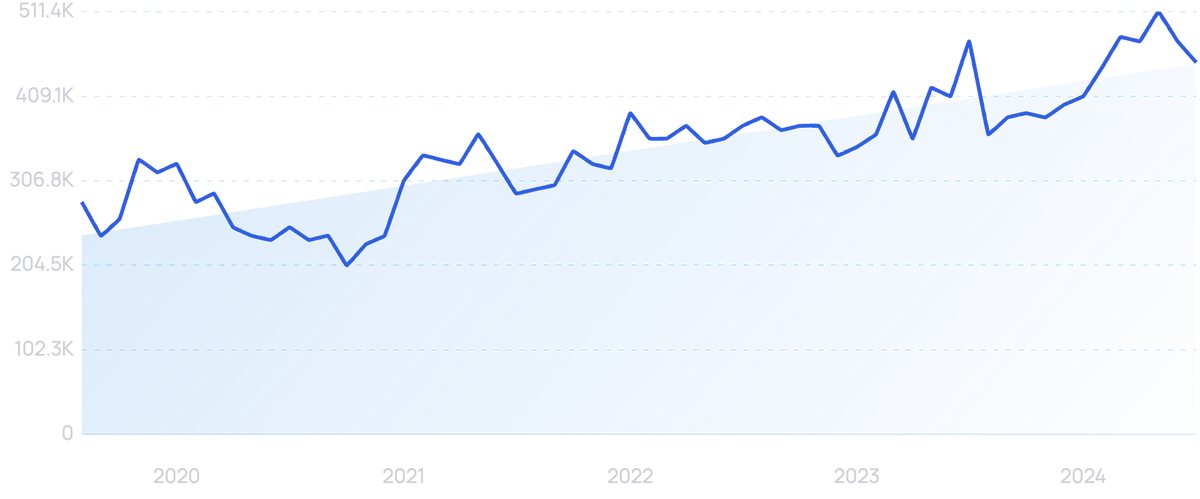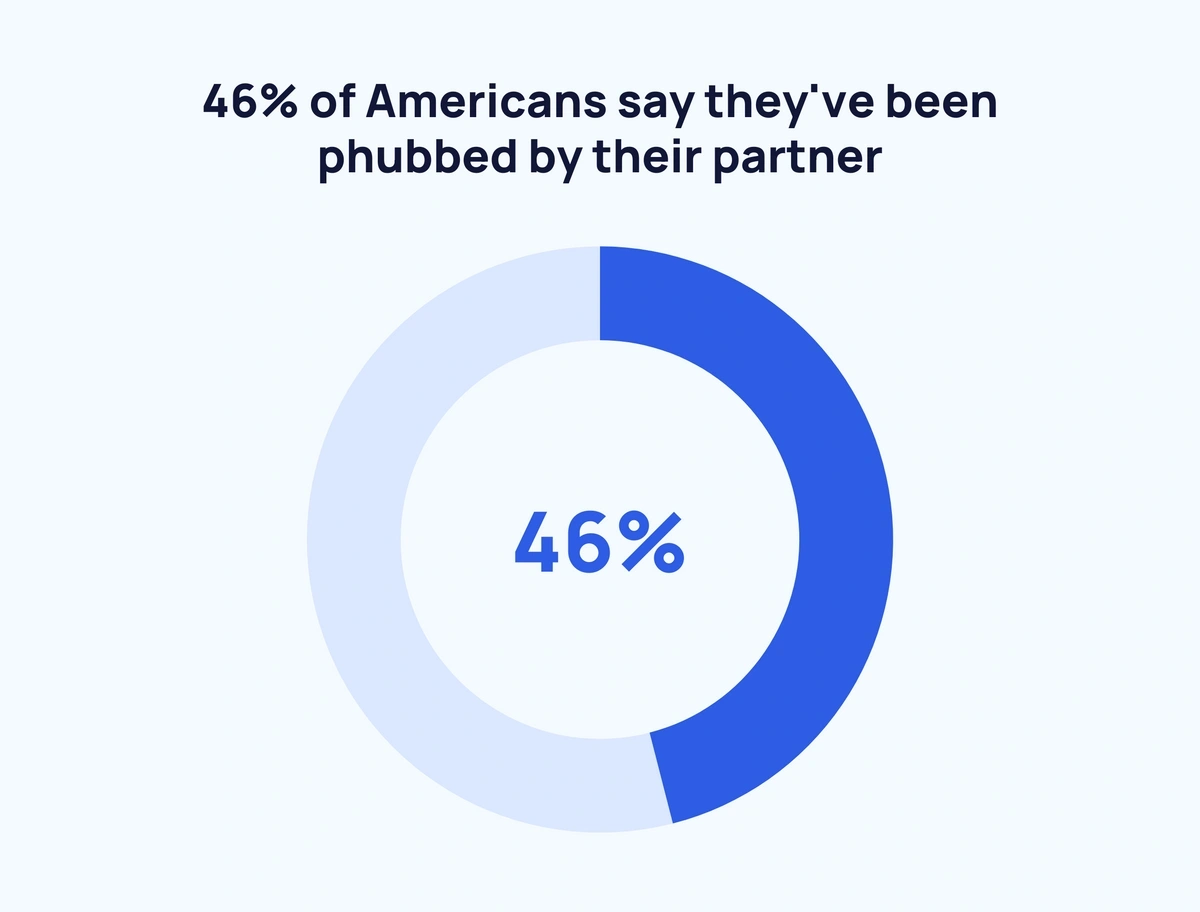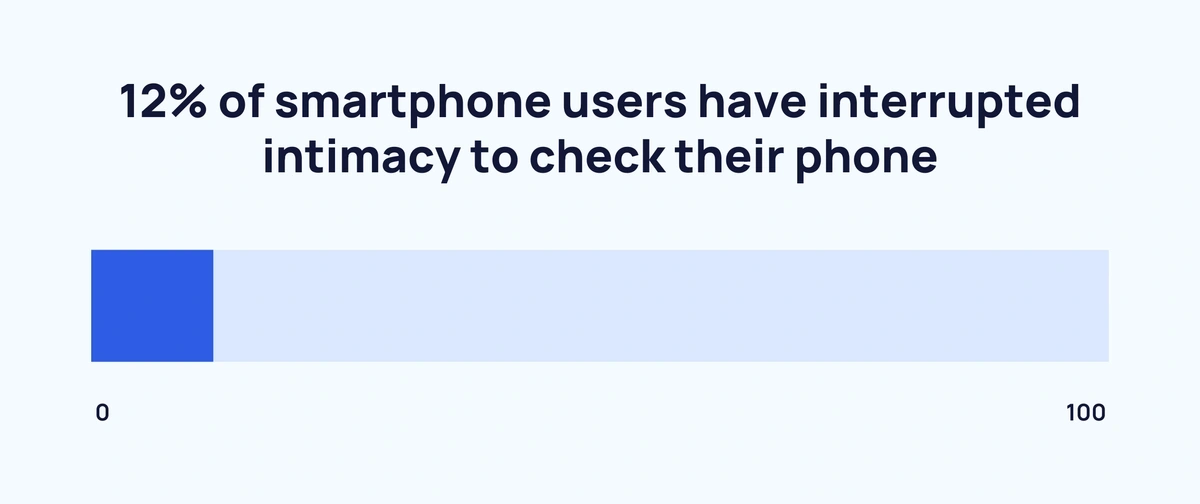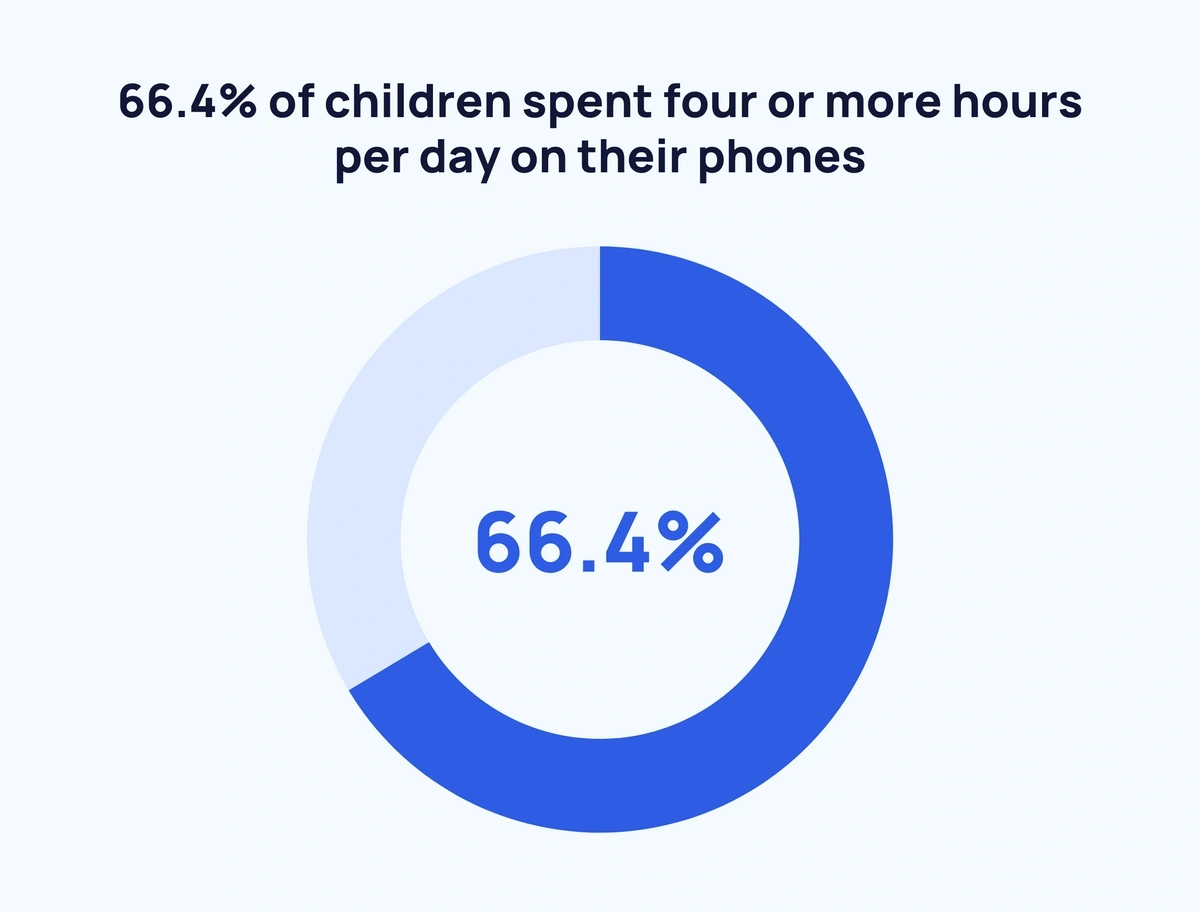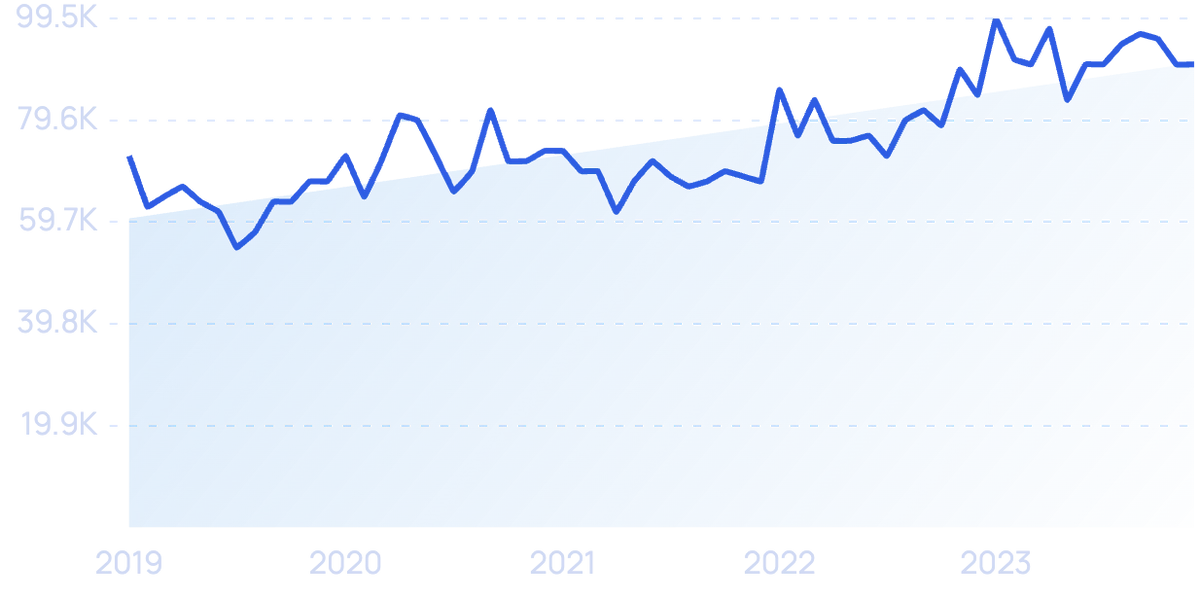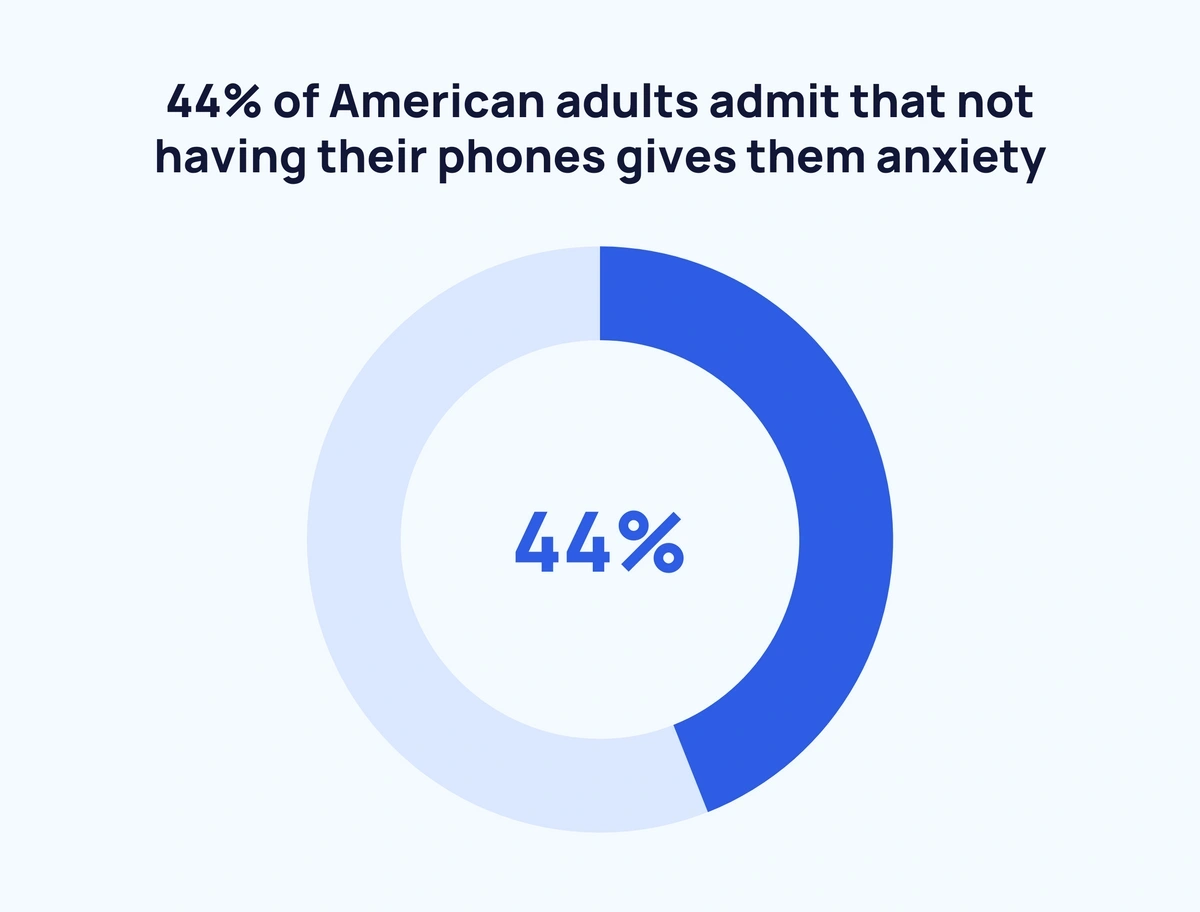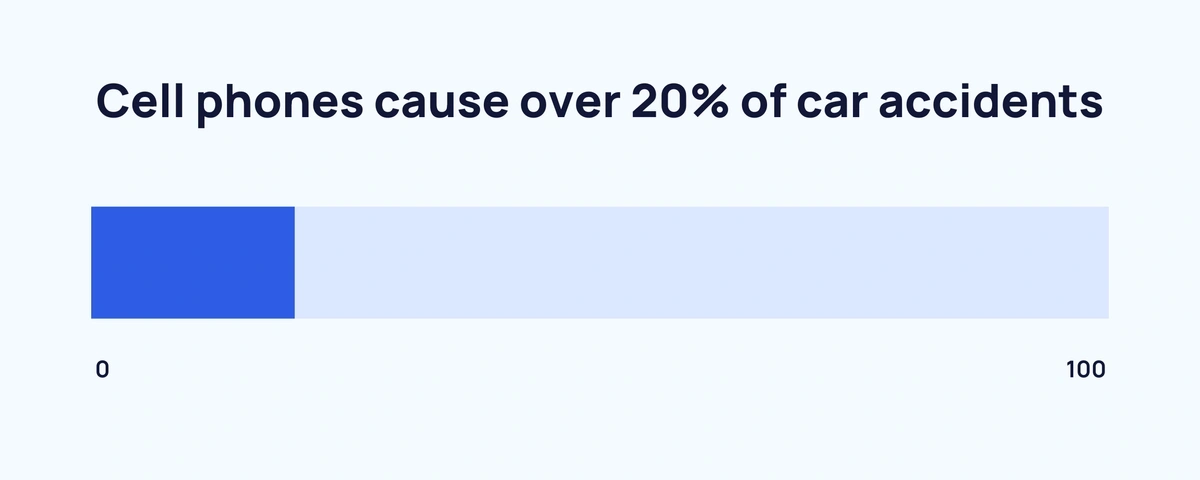
57+ Incredible Smartphone Addiction Statistics for 2025
Are you a smartphone addict?
Do you reach for your phone first thing in the morning? Feel waves of anxiety when you see a “low battery” notification?
If you answered “yes” to these, you might be one of the billions of smartphone addicts in the world today.
While smartphone addiction may not have the capability to destroy lives like drugs or gambling, it does have real-life consequences.
It can harm your productivity, put a strain on your romantic relationships, and create deadly distractions on the road.
But what does smartphone addiction look like from a numbers perspective?
Read these smartphone addiction stats to find out.
Contents
- Top Smartphone Addiction Stats
- General Smartphone Addiction Stats
- Smartphone Addiction And Relationships
- Childhood Smartphone Addiction
- Dangers Of Smartphone Addiction
Top Smartphone Addiction Stats
Before getting into the full list, here are some of the more eye-opening smartphone addiction stats to get you started:
- 56.9% of Americans admit they’re addicted to their phones
- The average American checks their smartphone 144 times per day
- 71% of people spend more time on their phone than with their romantic partner
- Almost two-thirds of children spend 4 hours or more per day on their smartphones
- 44% of American adults admit that not having their phones gives them anxiety
- Cell phones cause over 20% of car accidents
General Smartphone Addiction Stats
The amount of time people spend per day and frequency of use are key indicators of smartphone addiction. How much time do people spend on their smartphones? How many times per day do they use them? Here are the answers to those (and more) questions.
Over half of Americans say they’re addicted to their phones (Reviews)
In total 56.9% of respondents from a 2023 study say they are addicted to using their phones. And that’s just the number who admit to it.
Almost 9 in 10 (89%) of Americans check their phone within 10 minutes of waking up. And 64% bring their phones to the toilet.
The average American checks their smartphone 144 times per day (Reviews)
Americans look at their screens once every 10 minutes, according to a recent survey by Reviews. Considering average sleeping hours, this figure actually is closer to 7 minutes and 30 seconds between phone checks.
90% of Americans own a smartphone (Pew Research)
Pew Research first started tracking smartphone ownership in 2011. Back then, 35% of Americans owned a smartphone. Today, that number has skyrocketed. For Americans under 50, smartphone ownership is over 89%.
The average American spends 5 hours and 16 minutes per day on their smartphone (Harmony Healthcare IT)
When taking age into consideration, the numbers shift significantly. Gen Z racks up the most average screen time at 6 hours and 27 minutes, while Millennials aren’t far behind at 5 hours and 28 minutes. Gen X averages 4 hours and 48 minutes, and Baby Boomers spend the least at 4 hours and 19 minutes. In a single day, the average smartphone user clicks, swipes, or taps 2,617 times.
57% of people spend five or more hours per day on their phone (Sell Cell)
Bank Cell asked over 2,000 respondents how many hours they spent per day on their phones for non-work activities. Only 5% said 1 hour or less, while 46% said between 5 and 6 hours. 11% spent more than 6 hours per day on their smartphone.
Silencing smartphones actually increases use (Science Direct)
Smartphones can be distracting. For many, the solution is obvious — silence or turn off notifications. However, according to a Penn State study, silencing smartphones leads to more frequent phone-checking, especially in people with high FOMO (fear of missing out).
Google searches for “fomo” have increased by 60% over the last 5 years.
31% of American adults say they’re “constantly online” (Pew Research)
85% of Americans go online on a daily basis. Nearly half of those (48%) go online several times per day. But around 3 in 10 Americans (31%) say that they’re always online.
The age 18-29 demographic is the most prolific, with 48% admitting to spending all day online.
Many Americans rely on their smartphones for internet access (Pew Research)
15% of US adults don’t have broadband internet at home. Instead, they use their smartphones for internet access.
That “smartphone dependency” sits at 20%+ for 18-29-year-olds (20%), Hispanic (20%) or black (21%) Americans, people earning $30,000 or less per year (28%), and people whose highest level of education is high school or lower (24%).
According to Semrush study that compared mobile and desktop use, mobile devices drive most of the world’s web traffic. In fact, over 60% of website traffic comes from mobile devices.
More than half of Americans say they haven’t gone longer than 24 hours without their phone (Reviews)
Could you handle a day without your smartphone? 55% of Americans say they have never gone more than a day without theirs.
Fear of being without your smartphone is a real thing. It’s even been given a new word: nomophobia (no mobile phone phobia).
Just the thought of their phone dying can cause psychological harm. 47% of people report feelings of fear or anxiety when their phone’s battery gets below 20%.
Around 9 in 10 smartphone users check their phones less than an hour before going to bed (Bank My Cell)
In total, 87% of Americans look at their phone within the first hour of waking. That’s up 7% from 2018.
Smartphone Addiction and Relationships
Can smartphone addiction damage a relationship? For millions, putting down their phones to pay attention to their partner is a real struggle.
Here’s how smartphone addiction affects romantic relationships:
Almost half of Americans say they’ve been phubbed by their partner (Baylor)
What’s phubbing? It’s a portmanteau for “phone snubbing,” and it is wreaking havoc on romantic relationships.
Almost half of adults (46%) say they’ve been phubbed by their significant others. 23% say phubbing has caused conflict in their relationship.
71% of people spend more time on their phone than with their romantic partner (Sell Cell)
That’s right, almost three-quarters of people in romantic relationships dedicate more time to their phones than their partners. 52% say they spend 3 to 4 hours more with their phone than with their partner.
Around 1 in 8 smartphone users have interrupted intimacy to check their phone (Sell Cell)
Smartphone addiction can affect all areas of life — even romance. 1 in 10 users admit to checking their phones during intimate moments with their partners. That might be a reason why 18% of users in a relationship have established “no phone zones” or areas of the house where smartphones are off-limits.
Most people would rather spend time on their phone than with their partner (Sell Cell)
When asked if they’d rather spend time on their phone or with their partner, 54% chose their smartphones. 30% of people say they’ve texted their partner when they were both at home.
Build a winning strategy
Get a complete view of your competitors to anticipate trends and lead your market
Childhood Smartphone Addiction
For many, smartphone addiction starts during childhood. Kids are getting their first smartphones earlier and spending more time on them than they were just a few years ago. Here are the most recent childhood smartphone addiction statistics.
56% of children and adolescents use their smartphones after midnight at least 3 times per week (Italian Journal of Pediatrics)
In a study of 184 Italians aged 6-18 years, researchers found that over half frequently used their phones after midnight. Before the pandemic, only 30% of the study group used their phones after midnight 3 or more times per week.
Almost two-thirds of children spend 4 hours or more per day on their smartphones (Italian Journal of Pediatrics)
In the same study, researchers found that 66.4% of participants spent four or more hours per day on their phones.
Before the pandemic, that number was just 16.3%.
The majority of American children own a smartphone by age 11 (Common Sense Media)
An increase in ownership could be behind the rise of smartphone addiction in kids. In 2015, just one-third of kids owned a smartphone by age 11. In 2019, that amount increased to 53%. 91% of Americans own a smartphone by their 18th birthday.
Lower-income children spend more time looking at screens (Common Sense Media)
In families that make less than $35,000 per year, tweens (8-12-year-olds) spend an average of 5 hours and 49 minutes per day consuming screen media. For families that earn over $100,000, that screen time drops to 3 hours and 59 minutes.
Google searches for “screentime” have increased by 144% over the past 5 years.
American teenagers send an average of 39 texts per day (Common Sense Media)
Kids are spending more time on their phones and getting them at an earlier age. But they’re actually texting less than they were in the recent past. In 2015, teens sent an average of 55 texts per day.
72% of parents feel their teenagers are distracted by smartphones during in-person conversations (Pew Research)
The feeling cuts both ways, as 51% of teenagers actually say their parents are distracted by their smartphones. Interestingly, parents are more likely to be distracted by their phones at work (39%) than teenagers are to be distracted at school (31%).
Dangers of Smartphone Addiction
Smartphone addiction has some serious side effects. It can cause mental health issues like depression and anxiety. Safety hazards — like traffic accidents — are more of a risk when smartphones are involved.
Almost half of American adults admit that not having their phones gives them anxiety (YouGov)
YouGov’s recent poll shows just how attached Americans are to their smartphones. Out of 1,150 respondents, 18% (nearly one in six) strongly agreed with the statement “not having my phone with me makes me feel anxious”.
42% of American adults say they waste too much time on their smartphones (YouGov)
Having the world at your fingertips isn’t always a good thing. Today’s most popular smartphone apps are designed to keep users hooked and scrolling away — sometimes for hours on end.
30% of Americans say they’d be more productive without their smartphones (YouGov)
Smartphones can help us get more done. They can also be productivity killers. While three in ten Americans say their phones affect productivity, 37% say that smartphones don’t stop them from getting things done. Productivity apps like Forest use gamification to battle smartphone addiction and curb screen time.
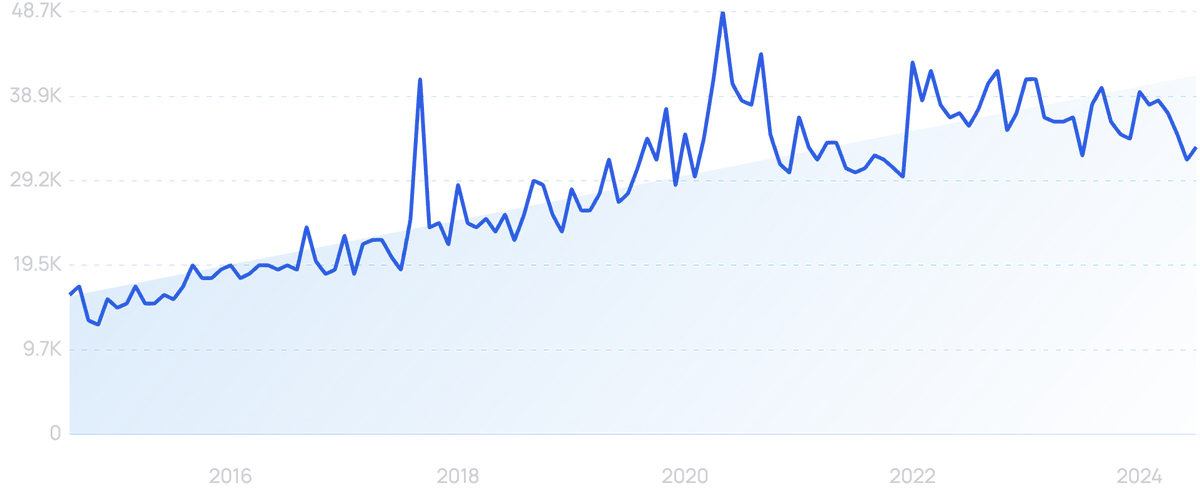
People with smartphone addiction have worse sleep quality than those without (Frontiers)
Poor sleep quality affects billions of people, but smartphone addicts are even more susceptible. In a UK study, 69% of smartphone addicts had poor sleep quality compared to 57% of non-addicted participants.
Smartphone addiction correlates with anxiety, depression, and other mental health issues (Ariel University)
In a 2021 Ariel University study of 84 research papers, researchers found several negative cognitive effects of smartphone addiction, including difficulties in emotional regulation, impulsivity, shyness, and low self-esteem. Subjects with smartphone addiction had comorbidities with mental health disorders like depression, anxiety, OCD, ADHD, and alcohol use disorder.
Cell phones cause over 1 in 5 car accidents (National Safety Council)
Texting while driving has been an issue since texting was invented. The National Safety Council put some hard numbers to the issue in their 2010 white paper. That year, 1.1 million car crashes in 2010 were caused by cell phone use. Around 160,000 of those accidents were because of texting.
Wrap Up
Smartphones are incredible devices. When used properly, they enable us to get important things done and help us stay connected to the world.
But there’s a dark side to smartphones. The more we use them, the more they become extensions of ourselves. And when we’re constantly glued to our screens, we put our work, relationships, and mental health in jeopardy.
If you think you might be addicted to your phone, remember this: they’re addictive by design. Give yourself some phone-free time each day. Designate no-phone zones in your home. Take a morning walk instead of a morning TikTok.
Smartphones aren’t going away, and they’re not going to get less addictive. But we can make an effort to balance our phone use with the most important things in our lives.
For more related content, we recommend Mobile App Development Trends and In-Demand Mobile App Startups.
Stop Guessing, Start Growing 🚀
Use real-time topic data to create content that resonates and brings results.
Exploding Topics is owned by Semrush. Our mission is to provide accurate data and expert insights on emerging trends. Unless otherwise noted, this page’s content was written by either an employee or a paid contractor of Semrush Inc.
Share
Newsletter Signup
By clicking “Subscribe” you agree to Semrush Privacy Policy and consent to Semrush using your contact data for newsletter purposes
Written By


Josh is the Co-Founder and CTO of Exploding Topics. Josh has led Exploding Topics product development from the first line of co... Read more

